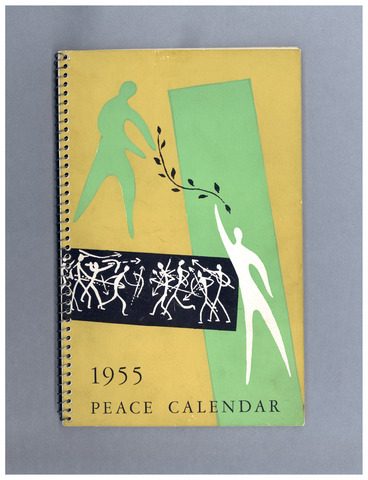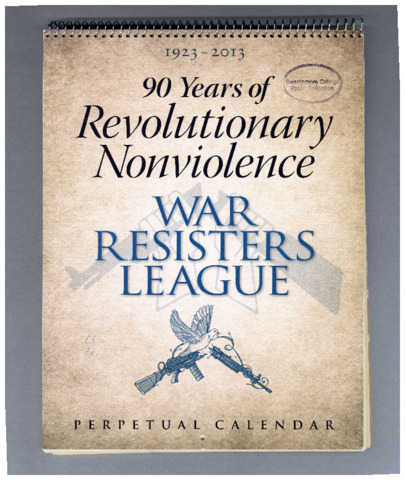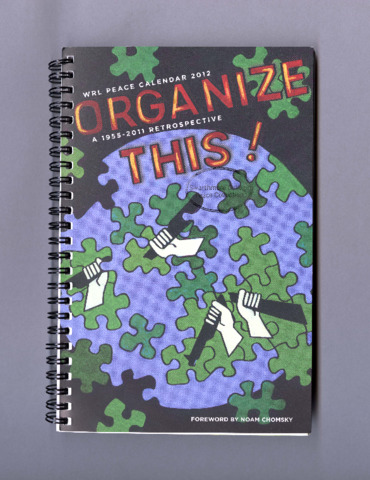The WRL Peace Calendar: An Overview
For 58 years WRL members and friends could count on having a pacifist touchstone at their fingertips: The War Resisters League Peace Calendar. It was a spiral-bound 5½ by 8½ inch datebook, with a page for each week of the year that allowed owners to record appointments and such. And a cover that consisted of beautiful artwork. After the first few years of publication, a page facing each week’s calendar page offered poetry, quotes, songs, and even recipes, plus additional artwork, all reflecting a specific theme. Poetry was the most frequent theme, followed by quotations about peace and nonviolence. Some calendars described peace actions and other events to present a historical perspective on nonviolence. A few were “cheats”: compilations from earlier calendars.
Writers, visual artists, and activists of some note lent their talents. Among them were Nobel Laureate Archbishop Desmond Tutu; Grace Paley, the first official New York State Author in 1986; Denise Levertov (Out of the War Shadow, 1968), Robert Frost Medal winner for poetry; and Faith Ringgold, a multi-media artist and author who won 80 awards and honors and 23 Honorary Doctorates. Ringgold’s “Remember” was published in the 1972 In Woman’s Soul calendar.
Neither was there ever a shortage of volunteers eager to do the creative work of the calendar. There was much less enthusiasm for meeting deadlines, however. The sad result was that in the early years printed calendars appeared in the WRL office as late as November. Thus, there was little time for mailing out pre-orders and for purchasers to reorder additional copies for holiday gifts. But in the ’70s, once the pressure of trying to end the Vietnam War was lifted, calendar production was professionalized and copies arrived with the Labor Day weekend. In the spirit of full disclosure, I report that I became the designated taskmaster, working to increase efficiency and imposing non-negotiable deadlines. No doubt that WRL sold more calendars and the anxiety level of WRL staff members decreased as a positive outcome of this new process, but no doubt also that some calendar workers never stopped longing for the old days when production was a more leisurely undertaking.
While the War Resisters League Peace Calendar was an effective vehicle for promoting its pacifist vision, it was also a primary fund raising mechanism. Sales dwindled in the early 2000s as electronic date keepers gained in popularity. Thus, the 2012 calendar, Organize This: A 1955-2011 Retrospective, with an introduction by Noam Chomsky, was the last annual. The next year, for a significant anniversary, WRL issued a perpetual calendar, 90 Years of Revolutionary Nonviolence. Larger in size than previous calendars and with an eclectic array of illustrations, it presented a key peace movement commemoration for each day of the year. It was the summation of 58 years of publishing history with several new pieces of artwork and photographs—produced with a tear for the end of a fundamental part of WRL’s program and a smile for the hope of the next chapter of important pacifist work.
– Wendy Schwartz
WRL’s permanent repository at The Swarthmore College Peace Collection contains a set of WRL Peace Calendars, recently digitized and made available online as part of The War Resisters League Publications Digital Collection. This article is the first of a series of blogs posts focusing on the WRL Peace Calendars to be published during 2024.
Share





